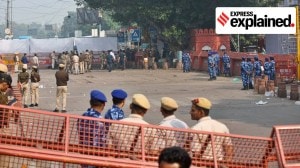High toll of leopards in Assams spots of bother
Assam has seen a spurt in man-animal conflicts,particularly human attacks on leopards,over the past few weeks
Assam has seen a spurt in man-animal conflicts,particularly human attacks on leopards,over the past few weeks. Last week,villagers not only killed two leopards one in Dibrugarh district and the other in Kamrup but also shared their meat at both places. In the Kamrup incident,at least eight persons had been injured when two leopards attacked them in a field,following which the villagers killed one of them; the other escaped.
In Guwahati,at least five leopards have been rescued in the past two months while four have been killed. A man had also died in the heart of the city after being attacked by a leopard in January. The latest incident was on Sunday,when a full-grown leopard was injured after it fell into a well in the Boragaon,Guwahati. Forest officials managed to rescue and shift it to the State Zoo before overenthusiastic people could cut it into pieces and feast on its meat.
Leopards are indeed under severe threat across the state. Increasing conflict between people and wild animals,more particularly leopards,has become a major problem,especially with a section of the people violently retaliating,causing injury and even death to the animals, said S P Singh,state chief conservator of forests (wildlife). Forest Minister Rockybul Hussain said a committee has been constituted to examine how this could be checked.
Such has been the menace that the state forest department last month mounted a media campaign to generate awareness against killing or causing harm to leopards. The authorities have asked the people to immediately inform the forest department when they sight a wild animal outside a sanctuary or national park instead of trying to attack it.
Though no official statistics are readily available on the death of leopards at the hands of human beings,unofficial reports put the figure at around 70 betwen 2005 and 11. The highest number of leopards killed was in 2008,with Aaranyak,a leading wildlife NGO putting the toll that year at 29. Last year,seven leopards were killed in Dibrugarh alone.
Environment and wildlife NGOs,meanwhile,blame the government for failing to protect the wildlife habitats in the state. In Upper Assam,leopards have always been common in the tea-growing districts. But the same people who used to earlier revere the wild animal are today in retaliatory mood, said a forest official of the Upper Assam region.
In Dikom tea estate,the authorities have created a team to capture leopards alive and then release them in Jeypore reserve forest. We have been spending quite a sum to trap the leopards and live and also transport them to Jeypore at our own cost, said Samarjyoti Chaliha,manager of the tea estate where 19 cats have been captured in three years.
In Guwahati,the problem has suddenly increased with vacant land and hillocks being rapidly converted into residential areas.





- 01
- 02
- 03
- 04
- 05


























